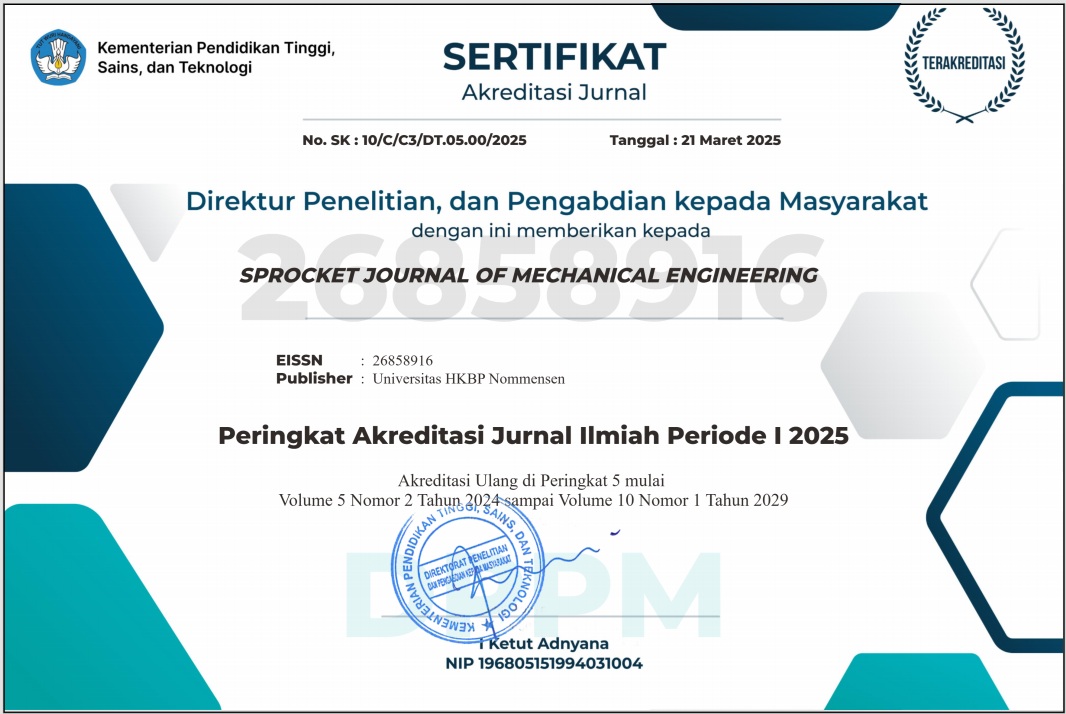Membuat Ruangan Bebas Covid 19 Dengan Robot Disinfektan Dibawah Kendali Smartphone
Abstract
Watering with a robot that uses a nozzle (sprayer) as a device for sprinklers, such as a disinfectant sprayer. To operate this tool, it is controlled using a smartphone to drive a DC pump so that the disinfectant liquid comes out through the nozzle. The disinfectant spraying robot is designed using two DC motors (primary movers) and one DC pump (liquid sprayer) based on an Atmega 8 microcontroller which is controlled by the user via a smartphone with the help of a Bluetooth network. The results of the system test are wireless communication designs to control the robot using a Bluetooth network, namely by installing a bluetooth adapter on the robot so that the robot can receive commands from the user via a smartphone. Watering using 500 ml liquid media, capable of running to spray in the rooms that want to be sprayed with an operating time of 3-5 hours. The movement speed of the robot is 5.3 km/h, the system can rotate 360o and forward, backward, right and left. The nozzle on this robot has a maximum spray distance of 2 meters. From the results of this test, the robot's response is in accordance with what is expected
References
[2] D. Setiawan, et. All., Sistem Estimasi Signal To Noise Ratio Untuk Komunikasi Data Dari Robot (Omniweel) Ke Android Dengan menggunakan Metode Korelasi, Jurnal Elkasista, 1., 5-13, 2020.
[3] J.E. Istiyanto, Pengantar Elektronika & Instrumentasi, Joyakarta, Andi, 2013
[4] P. Jiang & sheng, An Inttelligent Robot System for Spraying Pesticides, The Open Electrical & Electronic Engineering Journal, 8., 1., 435-444, Desember, 2014. DOI : 10.2174/1874129001408010435
[5] S. Hakim, et. all, Automated Pesticides Spraying Robot- Agrobot, International Research Journal of Engineering and Technology (IRJET), 7., 12., 2222-2223, Desember, 2020. e-ISSN: 2395-0056.
[6] S. Rangkuti 2011 , Mikrokontroler ATMEL AVR (ISIS Proteus dan CodeVisionAVR) , Jakart, Informatika, 2011.
[7] Y. Apriani, et. All, Kendali Robot Spray Disinfektan Otomatis, Jurnal Teknik Energi Elektrik, Teknik Telekomunikasi, & Teknik Elektronika, 9., 4., 800 - 812, Oktober, 2021., DOI : http://dx.doi.org/10.26760/elkomika. v9i4.800.

This work is licensed under a Creative Commons Attribution 4.0 International License.
Penulis yang menerbitkan dengan SPROCKET JOURNAL OF MECHANICAL ENGINEERING menyetujui ketentuan berikut :
- Penulis memegang hak cipta dan memberikan jurnal hak penerbitan pertama dengan karya yang dilisensikan secara bersamaan di bawah Lisensi Internasional Creative Commons Atribusi 4.0 . yang memungkinkan orang lain untuk berbagi karya tersebut dengan pengakuan atas kepengarangan karya dan penerbitan awal dalam jurnal ini.
- Penulis dapat membuat pengaturan kontraktual tambahan yang terpisah untuk distribusi non-eksklusif atas versi jurnal yang diterbitkan dari suatu karya (misalnya, mempostingnya ke repositori institusional atau menerbitkannya dalam sebuah buku), dengan pengakuan atas penerbitan awalnya di jurnal ini.
- Penulis diizinkan dan didorong untuk mengunggah karya mereka secara daring (misalnya, di repositori institusi atau di situs web mereka) sebelum dan selama proses penyerahan, karena hal ini dapat mengarah pada pertukaran yang produktif, serta kutipan yang lebih awal dan lebih banyak dari karya yang diterbitkan (Lihat Pengaruh Akses Terbuka ).






.png)
.png)

